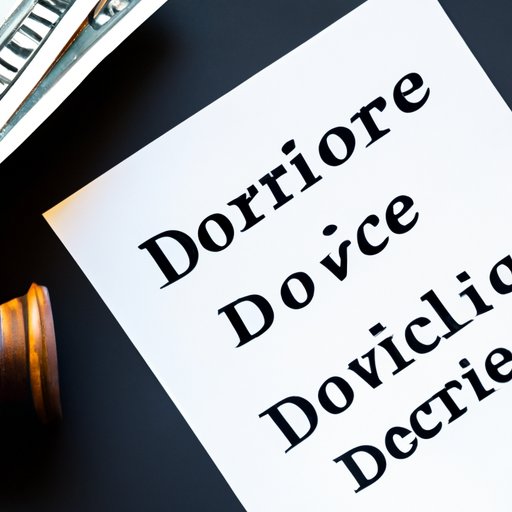
Learn How to File for Divorce in NY for Free: A Step-by-Step Guide
Filing for divorce can be a challenging and stressful experience, both emotionally and financially. However, knowing how to file for divorce in NY for free can take some of the financial burdens off and make the process less daunting. This guide provides insights into the step-by-step process of filing for divorce in NY, eligibility and requirements, alternatives to traditional divorce, financial planning for divorce, finding free legal help, and dealing with the emotional and mental health aspects of divorce.
Step-by-Step Guide
To file for a divorce in NY, follow these steps:
- Check if you meet the residency requirement. Either spouse must have lived in New York State for at least two years before filing or one year if you got married in NY or lived in the state as a married couple.
- Determine the grounds for divorce. You can choose either fault or no-fault grounds. No-fault grounds are less complicated and include irretrievable breakdown of the marriage for six months or more. Fault grounds include cruel and inhuman treatment, abandonment, imprisonment, and adultery.
- Prepare and file the necessary paperwork. Complete the appropriate forms, including the Summons with Notice, Verified Complaint, and Affidavit of Service, and file them with the appropriate court.
- Pay the required filing fee. If you cannot afford the filing fee, you can request a fee waiver from the court.
- Arrange for service of process. Serve the divorce papers to your spouse via mail, delivery service, or through a process server. You must also file proof of service with the court.
- Appear in court. Depending on the circumstances, you might have to appear in court several times, including for temporary orders, mediation, and a final hearing.
- Finalize the divorce. If the court approves the divorce, you will receive the Judgement of Divorce, which legally ends your marriage.
Eligibility and Requirements
Several requirements must be met before filing for divorce in NY. These include:
- Residency requirements. Either spouse must have lived in New York State for at least two years before filing or one year if you got married in NY or lived in the state as a married couple.
- Grounds for divorce. You can choose either fault or no-fault grounds. No-fault grounds are less complicated and include irretrievable breakdown of the marriage for six months or more. Fault grounds include cruel and inhuman treatment, abandonment, imprisonment, and adultery.
- Separation period. If you choose no-fault grounds, you must have lived separately from your spouse for at least six months before filing.
- Child custody and support arrangements. If you have children, custody and child support arrangements must be established before the divorce is finalized.
Alternatives to Traditional Divorce
One alternative to traditional divorce is mediation. In mediation, a neutral third party helps both parties reach an agreement on matters such as child custody, property division, and spousal support.
Another alternative is collaborative divorce. In this process, both parties agree to settle their divorce outside of court and work with trained professionals to come to an agreement.
Finally, arbitration may be an option. It’s similar to going to court, but the arbitrator is a private decision-maker instead of a judge. It’s important to note that these alternative processes still require fees.
Financial Planning for Divorce
Divorce can have a significant impact on your finances. Planning and budgeting for it is essential. You should create a personal budget and gather all financial documents, including bank statements, tax returns, and investment statements.
Consider hiring a financial professional who can help you navigate the financial aspects of divorce, including asset division and tax implications.
Finding Free Legal Help
If you cannot afford an attorney, several organizations provide free legal help. Legal aid organizations offer pro bono legal services to those who qualify. Pro Bono attorneys may also be available. Be sure to check eligibility requirements and use resources on the court system’s site or inquire with the court clerk about the appropriate resources.
Coping with Divorce
Divorce is a challenging time, and it is important to prioritize your emotional and mental health. Seek support from friends and family, see a therapist, and reach out to support groups.
Remember to take care of yourself, including eating well, exercising, and getting enough rest. Talk to your children about the situation and provide guidance as to why the change is taking place.
As difficult as it is, life after divorce can be full of opportunity for growth and success. Ultimately, you’ll get through it and come out stronger on the other side.
Conclusion
Filing for divorce in NY doesn’t have to be a financially crippling experience. By following this step-by-step guide, you can file for divorce and begin the process of moving on. It is essential to manage both your financial and emotional needs, so be sure to plan ahead and seek the appropriate help.




